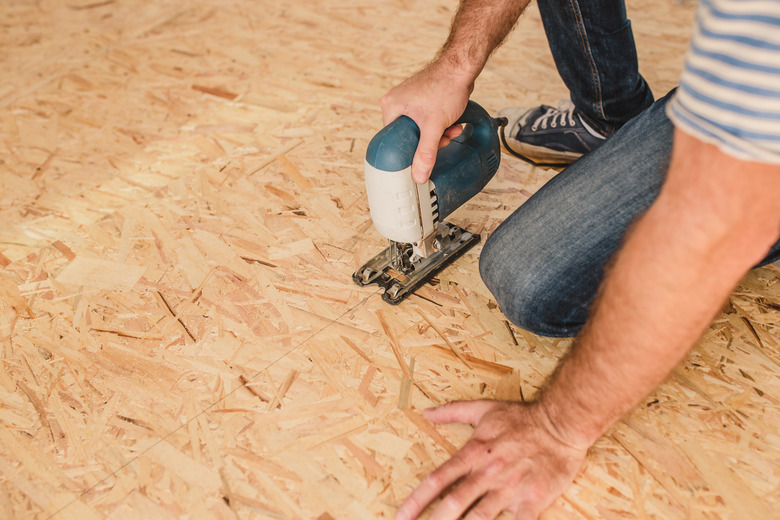What Type Of Plywood To Use For A Subfloor?
A subfloor is a wooden, structural substrate to which durable finished flooring is attached. Plywood is usually used as subfloor today. There are many types, sizes and configurations of plywood. Different plywoods use various materials and methods of manufacture, depending on the application for which they're intended. There are several types of plywood that are well-suited for subfloors.
CDX
CDX
CDX plywood is the most popular type of traditional or "veneer" plywood. CDX plywood is like other laminate plywoods, but the outer layers of laminate are grades "C" and "D," which means they are cosmetically rough and contain many imperfections, thus lowering their cost. This is desirable for structural panels because finish plywood can be extremely expensive. The "X" indicates that the plywood can withstand some moisture exposure. As with OSB, it is suitable for exterior sheathing as well, although it is not as water-resistant as OSB.
Tongue and Groove
Tongue and Groove
Tongue and groove, often shortened to "T and G" in builder-speak, is a joint used in many types of woodworking. It is similar to a mortise and tenon. A ridge on one edge of the plywood protrudes and fits into a slot in the adjoining edge. OSB and CDX subfloors come in tongue and groove. It's ideal for subflooring, because it prevents the edges of the plywood from moving and squeaking after insulation. Construction adhesive is used to better seal the tongue-and-groove joint.
Oriented Strand Board (OSB)
Oriented Strand Board (OSB)
OSB is an engineered structural panel, and technically, it isn't plywood. Unlike traditional plywoods, which laminate multiple layers of veneer, OSB uses wafers that are pressed together with a binder to form the panel. To be clear, OSB is not particleboard, either. While they are both made by compressing homogeneous mixtures of wood waste-product, OSB is structural and particleboard is not.
Multilayer Construction and Sizes
Multilayer Construction and Sizes
In new construction, a subfloor is typically a minimum of 5/8-inch thick. Another common size is 7/8 inch, and some subfloors are even thicker. New homes are not constructed with multilayer subfloors, but multilayer subfloors are used when a home is being retrofitted.
In a remodel for a home that has lighter joists and springy floors, also known as floor deflection, affixing CDX plywood to the old floor with construction adhesive and then screwing it down will take a lot of the spring out of the floor and probably most of the squeaks. When retrofitting a second layer of plywood to an existing plywood or solid wood floor, thinner layers will generally do.
